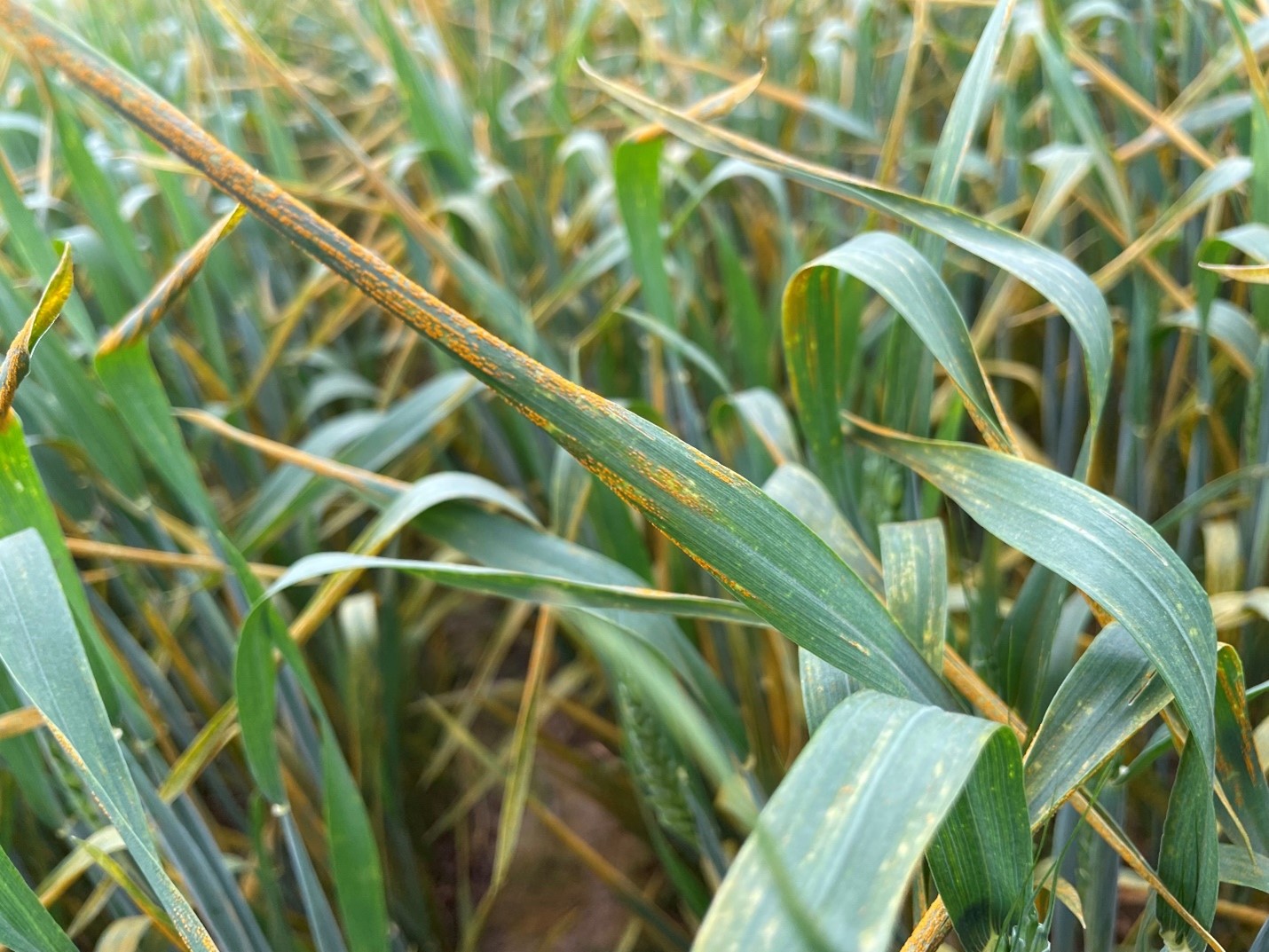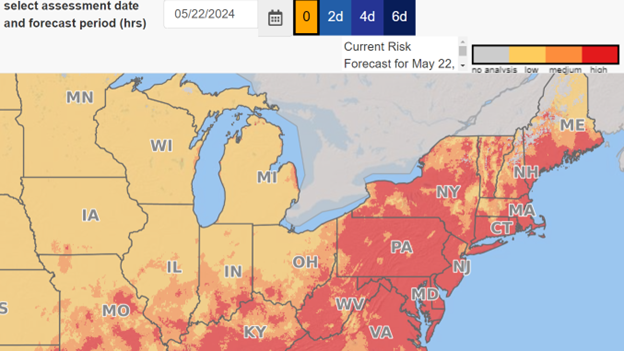Wheat stripe rust outbreak and Fusarium head scab risk prediction
Wheat stripe rust has developed quickly across Michigan. Stripe rust can result in significant yield loss. It’s important to scout to determine if a fungicide is warranted.

Stripe rust
Stripe rust has been detected in 13 Michigan counties and counting. Growers are urged to scout fields (see map of stripe rust confirmations). Stripe rust can develop quickly and result in significant yield loss. Be sure to scout your fields and be aware of disease pressure in your area. The goal is to keep the flag leaf as free of disease as possible through flowering and grain-fill periods. To achieve this, a fungicide may be warranted during or soon after the flag leaf stage, particularly when a fast-moving disease such as stripe rust is present. This was particularly true in 2016 where stripe rust was detected early on May 2 and progressed at a rapid rate.
A flag leaf fungicide timing may not be as crucial, depending on location, disease intensity and variety resistance. If stripe rust is detected in your fields and there is still some time before a head scab fungicide application, a fungicide application may be warranted now. If the crop is flowering, a fungicide application to reduce risk of head scab and DON will also do a great job at providing protection of the flag leaf, provided stripe rust is not rampant. If the crop is past flowering and a fungicide was made for head scab, it should provide good suppression of disease.
There are plenty of fungicide products that do an excellent job of managing stripe rust, just be sure that your application is within the labelled growth stage. For the complete list, see our Crop Protection Network multi-state fungicide efficacy guide.

Stripe rust can be identified by yellow to orange spores that form in linear stripes on infected leaves. Stripe rust can produce yellow stripes on leaves without sporulation. This can occur when a fungicide has been applied or if the wheat variety has adult plant resistance. If you are unsure, please submit a sample to the Michigan State University Plant and Pest Diagnostics clinic for confirmation. If you observe stripe rust in a county that has not yet been confirmed, please send a photo of disease to chilvers@msu.edu. This data helps us in the development of risk prediction models. For more information on stripe rust, see the following Crop Protection Network article, “An Overview of Stripe Rust of Wheat.”
Head scab

Thankfully, the head scab model has and continues to show low risk conditions suitable for plant infection (see map of Fusarium risk). If a fungicide application is being made to reduce head scab and subsequent DON, fungicides should be applied from the beginning of flowering up to seven days post the beginning of flowering. Fungicide products that provide good protection from head scab and stripe rust include Miravis Ace, Prosaro, Prosaro Pro and Sphaerex.
If applying fungicide products for head scab protection, don’t forget to use directional nozzles to increase coverage of the heads. Fungicides applied for head scab suppression will also assist in protecting the foliage.
A discussion on managing wheat and barley diseases and head scab can be found as part of our weekly Michigan State University Extension Field Crops Virtual Breakfast Series.



 Print
Print Email
Email




